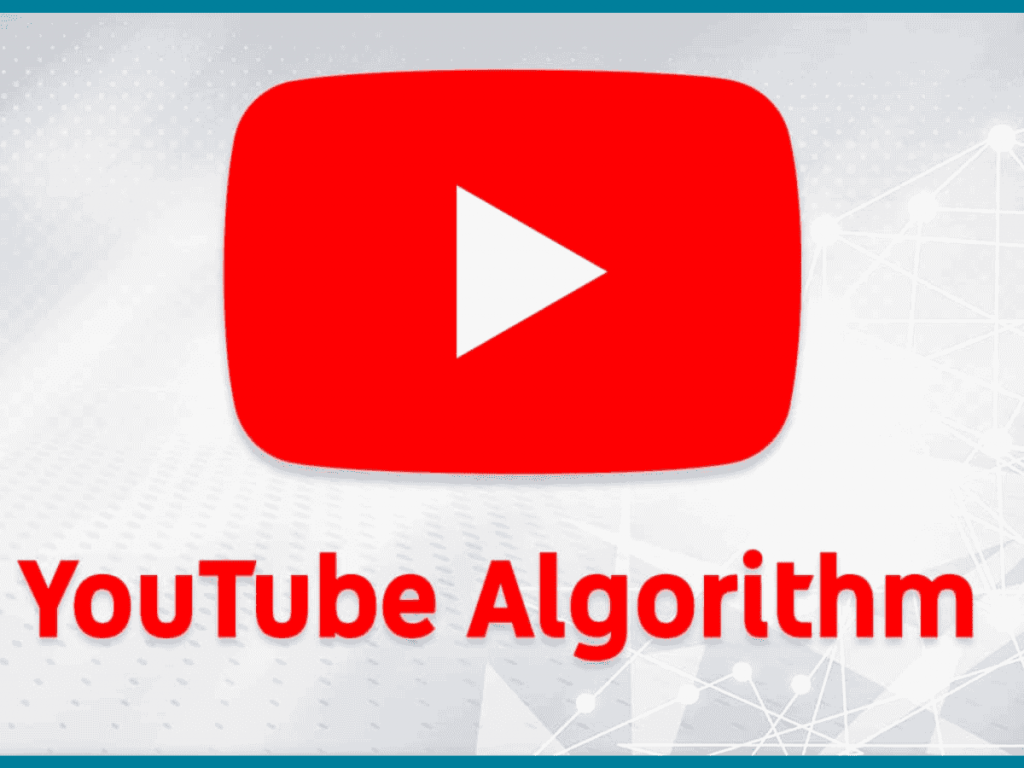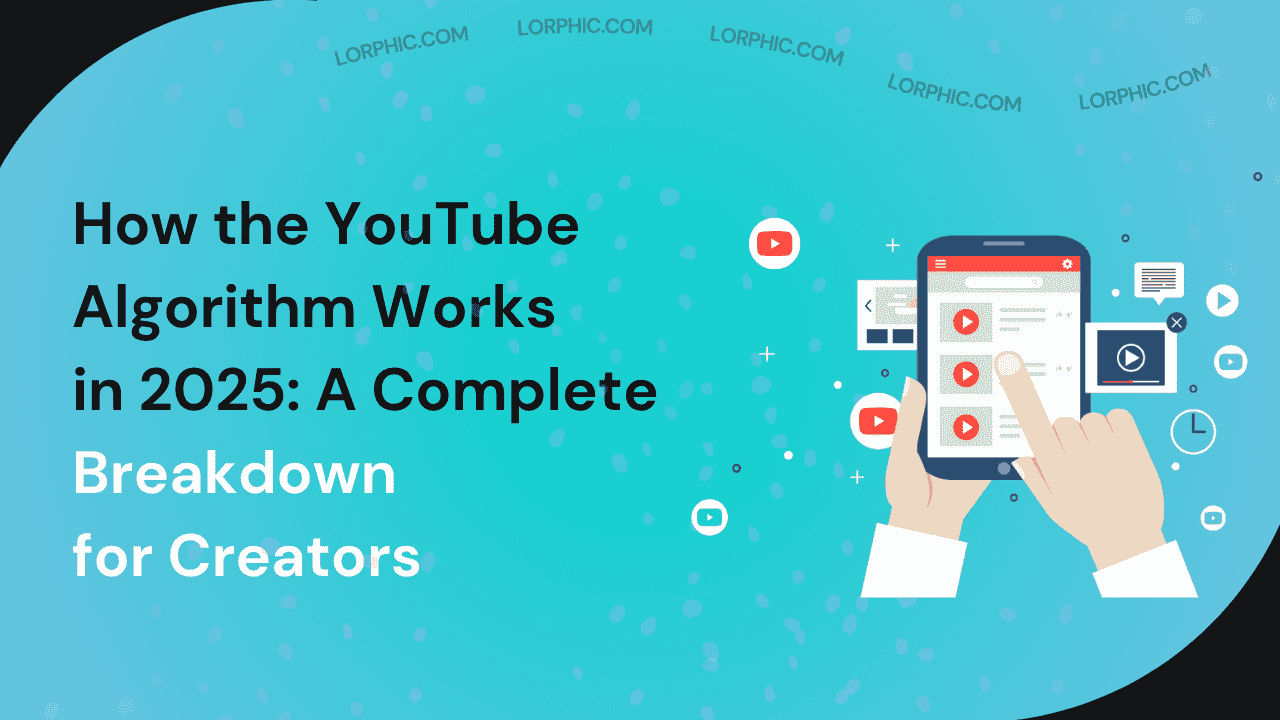If you’ve ever wondered why some videos skyrocket to millions of views while others struggle to gain traction, the answer lies in the YouTube algorithm. By 2025, this algorithm has become more intelligent, more personalized, and more user-centric in its approach to ranking videos, moving beyond mere clicks or views.
In this comprehensive analysis, we’ll reveal just how does the Youtube algorithm work in 2025, what drives your video rankings, and how you can use this knowledge to develop your channel strategically.
What is the YouTube Algorithm?
The YouTube algorithm is an advanced recommendation system powered by artificial intelligence that decides which videos appear on your home page, in the suggested videos section, and in search results.
This system carefully studies how viewers interact with content, including what they watch, how long they stay, what they like, and what they skip. It also looks at each video’s performance and overall relevance to understand what interests each user the most.
The main purpose of the YouTube algorithm is to keep people watching for longer periods by suggesting videos that match their preferences and habits.
Simply put, when your content satisfies viewers and holds their attention, YouTube rewards it with greater visibility and recommends it to a wider audience.
How Does the Youtube Algorithm Work in 2025?
The YouTube algorithm in 2025 has evolved into a highly intelligent system that uses advanced artificial intelligence to deliver a more personalized and engaging experience for every viewer. Its main goal is to connect the right content with the right audience, ensuring that users spend more time watching videos they truly enjoy.
This system operates through three main pillars that guide its decisions:
1. Personalization
YouTube customizes video recommendations for every viewer based on their past watch history, search activity, and engagement patterns. The platform studies what users like, skip, or comment on to predict what they might want to see next. This helps YouTube create a unique feed for each person, filled with videos that closely match their interests.
2. Performance Metrics
The success of your video plays a major role in how often it appears in recommendations and search results. Metrics such as watch time, audience retention, likes, comments, and shares tell YouTube how engaging your content is. When viewers watch your videos longer and interact positively, the system identifies it as valuable content and promotes it to more people.
3. Relevance
Relevance is determined by how closely your video matches what a viewer is searching for. YouTube looks at factors like your title, description, tags, and even the words spoken in your video (via transcripts). The better your metadata aligns with a user’s intent, the higher your chances of appearing in their search results or suggestions.
Recent updates have made the algorithm even more focused on the user experience. It now considers:
- Viewer satisfaction surveys and direct feedback.
- Whether a viewer prefers short-form or long-form content.
- The freshness and relevance of topics.
- Cross-platform engagement, such as interactions with similar content on Google Search.
In short, YouTube’s algorithm now rewards creators who prioritize value and authenticity over clickbait or keyword stuffing. To grow in 2025, focus on creating quality videos that educate, entertain, and retain viewers while keeping your metadata optimized.
How the YouTube Algorithm Ranks Videos?
The YouTube algorithm uses a combination of signals to decide which videos should appear at the top of search results, suggested sections, and home feeds. Understanding these ranking factors helps creators plan their content more effectively and attract a loyal audience. Let’s look at the major elements that influence rankings in 2025.

User Satisfaction and Retention
In 2025, YouTube places a strong emphasis on viewer satisfaction. The more your audience enjoys your videos and stays engaged, the more the algorithm rewards your content. Videos that hold viewers’ attention and encourage them to continue watching other videos on the platform tend to perform much better.
- Average View Duration: The longer your viewers watch your video, the more it signals quality and relevance to YouTube.
- Session Watch Time: YouTube also evaluates whether your video motivates users to stay on the platform and watch additional content.
- Satisfaction Surveys: YouTube’s AI now uses feedback and survey data to determine how much viewers liked your content.
Pro Tip: Focus on creating compelling stories, smooth pacing, and valuable information that keeps viewers watching until the end. You can also review the YouTube SEO checklist to ensure your videos are optimized for better engagement and discoverability.
Engagement Metrics That Influence Rankings
Engagement remains one of the strongest ranking signals. It reflects how well your content connects with your audience. When viewers interact with your video, it shows YouTube that your content provides real value.
The algorithm looks at:
- Likes and dislikes
- Comments and replies
- Shares across different platforms
- New subscriptions driven by your video
Higher engagement means stronger chances of being promoted in the “Suggested Videos” section and search results. If your engagement rate is still growing, consider learning how to get more traffic on YouTube to naturally increase these important signals.
Click-Through Rate (CTR) and Video Appeal
Your click-through rate tells YouTube how often people choose your video after seeing it in their feed or search results. A high CTR means your title, thumbnail, and overall presentation are doing their job well.
To boost CTR:
- Use titles that spark curiosity or emotion without misleading viewers.
- Design custom thumbnails that capture attention and reflect your video’s topic.
- Keep your visuals and branding consistent to build recognition and trust.
If you want to improve your video presentation, learning the difference between titles and descriptions on YouTube can help you find the right balance between creativity and SEO.
Personalized Recommendations and Watch History
YouTube’s recommendation system is deeply personalized. It studies each viewer’s watch history, subscriptions, and activity patterns to deliver content that matches their interests.
The algorithm also analyzes co-viewing trends. If people who watch your videos often enjoy content from another creator, your videos might appear alongside theirs in recommendations.
To make the most of this:
- Collaborate with creators who share your target audience.
- Develop a consistent content plan using how to create a YouTube content strategy as a guide.
- Build playlists around specific themes to keep viewers engaged within your channel.
Search Relevance and Metadata Optimization
When users search on YouTube, the algorithm reviews your metadata to determine how relevant your video is to their query. Metadata includes your title, description, tags, and even transcript keywords.
Using tools and techniques like what are tags on YouTube helps the algorithm understand your video’s topic and context. When combined with keyword-rich metadata and consistent engagement, this can significantly boost your rankings.
To find the right keywords, explore guides like how to find keywords for YouTube or check out the best YouTube keyword research tools to refine your targeting and reach a larger audience.
YouTube Algorithm Factors
The YouTube algorithm functions differently depending on where your video appears on the platform. Let’s look at the main areas:
Home Page
The YouTube Home page is all about personalization. Its goal is to bring viewers back by showing them videos they are most likely to enjoy based on their past activity. The platform studies each user’s viewing history, likes, and the channels they frequently engage with to create a custom feed.
If a viewer often watches, likes, or comments on your videos, YouTube will likely recommend your content more frequently on their Home page.
Tip: Stay consistent with your uploads and engage with your community through comments and updates. The stronger your connection with your audience, the more often your videos will appear on their feed.
Suggested Videos
The Suggested Videos section is where most creators experience significant growth. These videos appear alongside or immediately after a viewer finishes watching another video. The algorithm recommends content that shares similar topics, viewing patterns, or audience behavior.
For instance, if users who watch one video on digital marketing often enjoy your content on the same topic, your video may appear as a suggestion to them. YouTube also considers engagement levels, videos with higher watch time, likes, and comments are more likely to be suggested.
To increase your chances of showing up in this section, create connected content, use consistent tags, and keep your thumbnails and branding visually aligned. Developing a series or playlist can also help retain viewers and make your channel more discoverable.
YouTube Search
The search section operates much like a traditional search engine. YouTube’s algorithm prioritizes videos that best match a user’s search intent and have strong engagement metrics. Videos that use relevant keywords in their titles, descriptions, and tags tend to rank higher.
That’s why learning how SEO works on YouTube is so important. It helps your content reach the right audience at the right time. You can also explore how to optimize your YouTube channel for SEO to follow a step-by-step process for improving visibility and ranking in search results.
Ultimately, YouTube rewards videos that combine relevance and engagement. When your content aligns with what people are searching for and keeps them interested, your chances of ranking higher and gaining more views increase dramatically.
As highlighted by Search Engine Journal, optimizing YouTube videos with strong titles, relevant keywords, and accurate descriptions can significantly improve visibility in search results and suggested videos.
Conclusion
The YouTube algorithm in 2025 has become more intelligent and user-focused than ever before. It now prioritizes videos that truly engage and satisfy viewers through meaningful content, consistent watch time, and genuine interaction rather than those that only attract quick clicks.
To achieve long-term growth on your channel, focus on creating high-quality content that tells a story and keeps your audience interested. Make sure to optimize your metadata, including titles, descriptions, and tags, by following proven YouTube SEO strategies. Equally important is understanding your audience, knowing what they like, how they engage, and what type of videos they want to see next.
Creators who stay adaptable and balance creativity with optimization will stand out the most. By combining strong storytelling, smart SEO practices, and consistent posting, you’ll not only keep up with YouTube’s evolving algorithm but also build a loyal and engaged community that continues to grow well beyond 2025.
FAQ’s
How does the YouTube algorithm decide what to recommend?
It studies user behavior, including watch history, likes, and engagement patterns, to recommend videos that are most likely to keep the viewer watching.
What’s the biggest factor affecting YouTube rankings in 2025?
User satisfaction and watch time remain the most important factors, followed by engagement metrics like CTR and comments.
Curated by Lorphic
Digital intelligence. Clarity. Truth.


